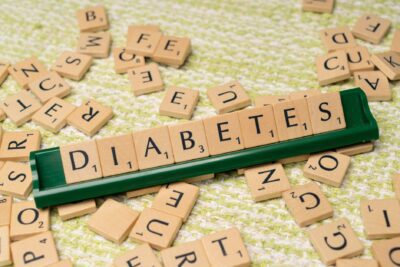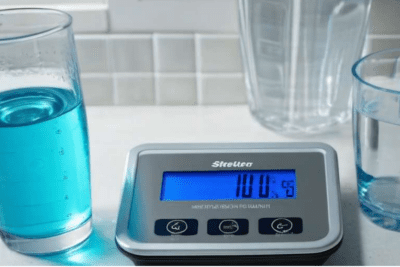
Experiencing genital itchiness can be distressing and often uncomfortable, a symptom commonly overlooked but significant nonetheless. When it comes to women with diabetes, this issue may signal more than just a skin irritation—it can be a noteworthy indicator of blood sugar levels that are not well-managed.
For those managing diabetes, understanding the connection between itchy genitals and diabetes is crucial. Uncontrolled high blood sugar can lead to a range of symptoms and complications, with skin issues, including genital itchiness and yeast infections, being among the more sensitive topics to discuss and treat.
🔍 Seeking a breakthrough in Type 2 Diabetes management?
Discover our expert insights and innovative approaches on ‘How to Cure Diabetes’.
Click to transform your health journey today!
What you\'ll find in this article?
- What Causes Genital Itching in Diabetes?
- How High Blood Sugar Levels Contribute to Yeast Infections
- Recognizing the Symptoms of Diabetic Itching
- Effective Treatments for Diabetes-Related Itching
- Preventing Yeast Infections and Itchy Skin in Diabetics
- When to Consult a Healthcare Provider for Genital Itching
- Frequently Asked Questions About Diabetes and Genital Itching
What Causes Genital Itching in Diabetes?
Diabetes can disrupt the body's natural balance, creating an environment where yeast infections thrive. High levels of glucose in the blood and urine provide an ideal breeding ground for yeast, leading to infections that cause intense itching. The presence of diabetes can compromise the immune system, making it harder to fight off these infections.
Additionally, diabetes can lead to neuropathy, where nerve damage affects the sensation in various body parts, including the genital area. Neuropathy can manifest as itching, which might be misinterpreted as a skin-only issue when it's actually a deeper systemic problem.
Women with diabetes may also experience hormonal changes that affect the vagina's pH balance, further increasing the risk of infections that cause itching. Conditions such as gestational diabetes and PCOS add to the complexity, making it even more vital for women to monitor and manage their blood sugar levels.
Explore our specialized services in diabetes care 🌟.
From personalized diet plans to effective exercise routines, we have what you need to take control of Type 2 Diabetes.
Visit our services page now!








How High Blood Sugar Levels Contribute to Yeast Infections
Excessively high blood sugar levels can create an overgrowth of yeast, most commonly Candida, in the genital area. The moist and warm conditions coupled with high sugar levels in urine are a perfect combination for yeast to grow unchecked.
This overgrowth disrupts the delicate balance of bacteria and yeast in the vagina, leading to the hallmark symptoms of a yeast infection: itching, burning, and discharge. Managing diabetes-related skin issues is an ongoing process that involves keeping blood sugar within the target range.
Frequent monitoring and adjustments to diet, exercise, and diabetes medications are key factors in preventing yeast infections and subsequent itching.
Recognizing the Symptoms of Diabetic Itching
It's important to recognize that diabetic itching doesn't just refer to a mild annoyance. It can be an incessant, intense irritation that significantly affects quality of life. The itching may be accompanied by redness, swelling, and a discharge that is typically white and clumpy, resembling cottage cheese.
In some cases, the itching might extend to the surrounding areas of the groin, thighs, and buttocks. It's also worth noting that diabetic itching can look like other skin conditions, making it essential to consult a healthcare provider for a proper diagnosis.
Identifying signs of diabetes-specific symptoms in women is crucial for timely treatment and prevention of complications including further infections and skin damage due to scratching.
Treating genital itching in diabetes revolves around both managing the diabetes itself and addressing the itch directly. Antifungal creams and medications are commonly prescribed for yeast infections. In parallel, diabetes medications may be adjusted to better control blood sugar levels.
Lifestyle interventions play a significant role as well. Simple changes like opting for cotton underwear, avoiding scented soaps, and maintaining proper hygiene can help alleviate symptoms. Dietary adjustments to reduce sugar intake can also be beneficial.
In severe cases, healthcare providers might recommend more targeted treatments, such as oral antifungal medications or even insulin therapy adjustments to keep blood sugar levels in check.
Preventing Yeast Infections and Itchy Skin in Diabetics
Prevention is better than cure, especially when it comes to uncomfortable and recurring yeast infections. Maintaining blood sugar levels within the recommended range is the cornerstone of prevention.
Regular screening for diabetes complications, maintaining a healthy weight, and following a diabetes-friendly diet are all effective strategies. Additionally, good personal hygiene and avoiding irritants can minimize the risk of developing yeast infections.
Regular check-ups with a healthcare provider can help catch any issues early and offer a chance to adjust treatment plans as necessary.
When to Consult a Healthcare Provider for Genital Itching
While occasional itching may not be cause for alarm, persistent or severe symptoms warrant professional attention. It's essential to consult a healthcare provider if you notice any recurrent itching, especially if you have diabetes.
They will be able to perform tests to diagnose the cause of the itching and recommend appropriate treatment. Being open about your symptoms, regardless of embarrassment, is vital to your health.
If you experience other symptoms such as pain, unusual discharge, or if the itching doesn't improve with over-the-counter treatments, seeking medical advice is imperative.
Frequently Asked Questions About Diabetes and Genital Itching
Can Diabetes Cause Itching in Private Parts?
Yes, diabetes can cause itching in the private parts. High sugar levels can lead to yeast overgrowth, resulting in infections that cause significant itching.
It's a common misconception that itching is solely due to poor hygiene; in diabetics, it's more often related to blood sugar control.
How Do You Stop Diabetic Itching?
To stop diabetic itching, focus on managing your blood sugar levels effectively. Use mild, non-irritating soaps, and consider antifungal treatments if a yeast infection is present.
Regularly consulting with your healthcare provider can also provide personalized strategies to prevent and treat itching.
What Does Diabetic Itching Look Like?
Diabetic itching can manifest as redness and swelling in the affected area, often accompanied by a white, clumpy discharge. It may appear similar to other skin conditions, so professional diagnosis is essential.
It may also be more widespread than typical yeast infections, affecting larger areas around the genitals.
How Does Diabetes Affect Your Genital Area?
Diabetes affects the genital area by altering the pH balance and providing a high-sugar environment conducive to yeast growth. Neuropathy, a complication of diabetes, can also cause itching sensations.
Good diabetes management is key to reducing the impact on the genital area and maintaining overall skin health.
For more insights on managing diabetes and its symptoms, watch this informative video:
Remember, while managing genital itchiness is important, it's just as crucial to maintain overall health and well-being when living with diabetes. Regular check-ups, proper diet, exercise, and vigilant blood sugar monitoring are vital components of a comprehensive diabetes management plan.
✨ Other articles you might be interested in:
- Insulin Injection Sites Complications: Effective Solutions to Manage and Prevent
- Foods to Avoid While Taking Januvia: Your Essential Guide
- Barley Sugar Diabetes-Friendly Treats that Delight
- Almased Weight Loss: The Ultimate Solution for Effective Weight Loss
- Carb Free Noodles: The Best Options for Managing Diabetes



